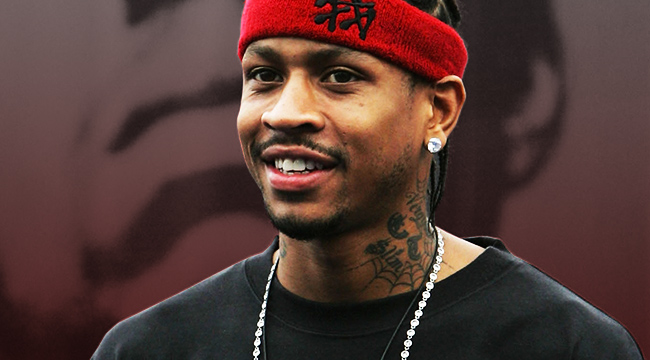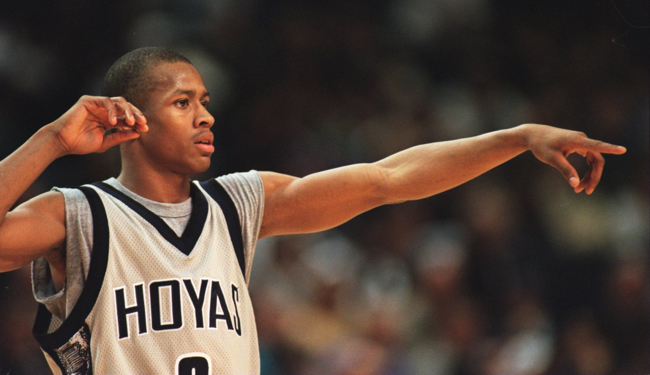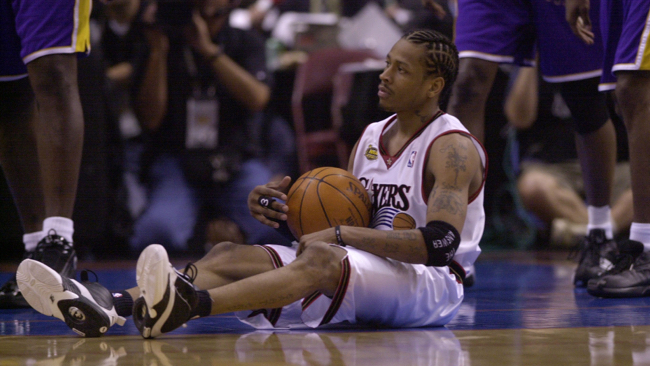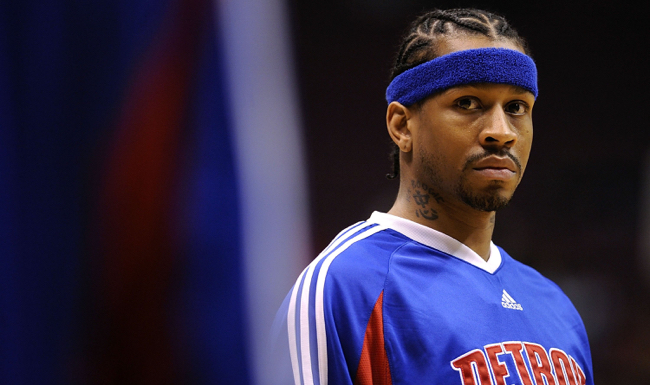The dust had barely settled on one of this summer’s blue-ribbon sporting events before the curtain raised on another. Less than 24 hours after Friday night’s Basketball Hall of Fame ceremony in Massachusetts, boxing’s best and brightest put on a similarly lavish show across the Atlantic.
Kazakh bruiser Gennady Golovkin sold out the O2 Arena quicker than most people can spellcheck his name; the chance to see him defend his historic knockout streak enough to make tickets for Saturday’s show the hottest in London town.
Not since Mike Tyson’s primal procession in the late ’80s has a fighter truly laid claim to the moniker of “baddest man on the planet,” his tear through the heavyweight ranks akin to that of a 10-pin bowling ball. More often than not, the skittles were skittering before Iron Mike had even hit the lane.
And while Golovkin has managed to reinvent that particular wheel of late, parallels with Tyson must be kept in perspective. After all, any such comparison between a middleweight and a heavyweight is, by its very nature, an exercise in relativity. Although the mythical “pound-for-pound” rankings have stirred barroom chatter since the Marquess of Queensberry was still in short pants, they remain just that — mythical. So obvious is the need for weight categories in boxing that there seems little need to devote any more commentary to the subject. David vs. Goliath storylines are likely to remain firmly in the wheelhouse of Vince McMahon for some time yet.
More interesting, however, is the absence of any such categorization elsewhere on the athletic spectrum. The fact that little Leo Messi can steal Zlatan Ibrahimovic’s lunch money is but one instance of that. Similar examples abound in almost every discipline, yet basketball remains among the exceptions that prove the rule. So difficult is it for a sub-six footer to succeed at the top level that there may as well be a rollercoaster-style height test at the combine. One need look no further than this week’s Hall of Fame class for proof of that.
Indeed, while the gargantuan frame of Shaquille O’Neal might be very much by the book, Allen Iverson is probably buried somewhere in the appendices. Such is the disparity between the pair that they could easily find themselves cast in an upcoming Twins remake.
Whatever you feel about Arnie, you have to suspect Danny DeVito would appreciate that particular analogy. After all, DeVito also made a career punching above his weight.
Mind over matter
Ann Iverson could be forgiven if her son’s life-plan hadn’t been meticulously plotted out upon his arrival in June of 1975; at just 15 years old, she was barely sure of her own. The pair’s unsteady foundations were shaken further when his father fled the nest shortly thereafter, with Allen inheriting man-of-the-house status before he’d even blown out a birthday candle.
It was a baptism by fire, and his life proved very much the same. Essentially, Iverson was a “celebrity” before most children his age knew what the word meant, his prodigious talent long since predating his illustrious spell at Bethel High School.
It was there that the teenager vaulted himself into the stratosphere, entrenching his status as a must-see athlete on the field and the hardwood. So seemingly boundless was his ability that the question was not whether he was destined for the top, but rather which sport would be lucky enough to coronate him.
As well as leading Bethel’s basketball team to the Virginia State Championships during his junior year, Iverson did the same with the school’s football team. His performances at point guard and quarterback saw the Associated Press crown him their “Player of the Year” in both sports. His partiality to the oval ball would ultimately give way to his passion for the round one, however, and while many college recruiters were keen to afford him the platform to fulfill his hoop dreams, events off the court meant his crown was already wearing heavy.
On Valentine’s Day 1993, Iverson and several friends were involved in an altercation with patrons at a bowling alley. Allen was one of four arrested as a result of that melee, with the group eventually being charged with and convicted of “maiming by mob.” A 15-year prison sentence was issued.
As it turned out, Iverson would spend just four months at the Newport Correctional Facility before Governor Douglas Wilder saw fit to waive the remaining 56, granting the teenager clemency in lieu of what was deemed insufficient evidence. While Newport robbed him of his senior year at Bethel, Iverson had tallied more than enough in the credit column to pique interest from all of America’s premier recruiters.
Georgetown University managed to win the Iverson sweepstakes in that respect. Head coach John Thompson enticed basketball’s next big thing to join the Hoyas’ heralded production line.
To a large extent, his show-reel stint at the Washington institute would prove totemic of what was to follow. Iverson’s staggering stats were not enough to drive Georgetown to any national championships during his two-year spell on campus. A foray to the elite eight of the NCAA Tournament was the height of his side’s success to that end, but Iverson’s personal ledger was overflowing by the close of his sophomore year. Having claimed 1995’s “Big East Rookie of the Year” award during his maiden campaign, Iverson would close the curtain on his college career by becoming a first team All-American 12 months later.
Such was his professional stock that he opted to jump to the NBA two years early, entering the 1996 Draft with the highest scoring average in Hoyas history.
Me, myself and A.I.
The 76ers’ decision to select him with the first overall pick spoke to his on-court credentials, and it was clear Philadelphia was keen to add Iverson’s face to the Mount Rushmore of their sports-mad city. The trek north from Washington D.C. to Pennsylvania may have only been 130 miles, but his move from the college ranks to the pros was closer to a million.
Indeed, where off-court concerns had once been the only hindrance to his domination, the environs of the NBA presented some altogether more practical ones. Flourishing in the league’s land of giants was always going to be a tall order for the pint-sized point guard; he was the smallest No. 1 pick in NBA history.
The mere fact that the 76ers were able to include themselves in that little wrinkle spoke to the gravity of their predicament. The NBA’s Draft lottery afforded them a staircase back from the NBA’s bottom step.
On Iverson’s not-so-broad shoulders sat this new responsibility, but — despite the burden — he thrived. He broke Wilt Chamberlain’s record with three straight 40-point games in his opening year, his 50-point effort in Cleveland followed up by a Rookie of the Year nod. Iverson would continue to produce performances that left fans in disbelief during the years which followed, and yet the Philly franchise largely remained in the dark.
It wasn’t until 1999 that he got to pop his playoff cherry, though, propelling his team into the postseason the same year he captured his first of four scoring titles.
AI’s ascent in Philadelphia was not without its hiccups, though. In fact, tumult was the default position for his working relationship with Coach Larry Brown. Their acrimony became such a burden that those in the franchise’s front office were almost of a mind to pawn off their crown jewel. Common sense prevailed, and cooler heads off the court were ultimately parlayed into red-hot performances on it. The revitalized Sixers started their 2000-01 season with a club-record 10 wins, riding that wave, and a dreadful Eastern Conference, all the way to a Finals meeting with the star-studded Lakers.
Not since 1983 had Philly featured in a season decider, so it likely came as little surprise when their Hollywood opponents were picked to sweep the series. And yet, Game 1 suggested that the Sixers hadn’t read the script; Iverson dropped 48 points to hand Kobe and co. their first — and it turns out, only — playoff loss of the calendar year.
Despite ultimately fighting a losing battle in those same Finals, the Sixers’ scintillating showing throughout 2001 suggested they were finally a force to be reckoned with in the wider war. Central to that optimism was the reality that they now boasted the league’s Most Valuable Player, Iverson having received the accolade after posting a career-high scoring average.
What seemed like a new dawn for the franchise ultimately proved to be a false one, however.
The five years which followed saw them regress to their customary mean of mediocrity, and Larry Brown’s departure in 2003 sparked the club’s head-coaching carousel. Randy Ayers, Chris Ford and Jim O’Brien all tried and failed to restore the genie to the bottle. Maurice Cheeks opted to see it off the premises entirely.
Iverson was run out of the city of Brotherly Love following unsavory run-ins with the Sixers’ top brass, his all-too-regular outbursts finally reached the end of Ed Snider’s long fuse. “We’re going to trade him,” confirmed the then-chairman in early 2006. “At a certain point, you have to come to grips with the fact that it’s not working. He wants out and we’re ready to accommodate him.”
Despite the unceremonious nature of his departure, Iverson’s renown among the Philly fan base remained close to Teflon. The fact that he left with the highest scoring average in franchise history ensured as much. In fact, such was his standing within the organization that the doors of the Wachovia Center would always remain open for Iverson.
Just as well. By 2009, it seemed most others had been shut in his face.
The long goodbye
Iverson returned “home” after a nomadic three-year trek through the league, including inauspicious stints in Denver, Detroit and Memphis. Given how worn and torn his 35-year-old limbs were looking during that final stanza, it came as little surprise that the deal he signed in November 2009 was mooted more as a farewell tour than a tour de force.
The deteriorating health of his daughter, Messiah, would cut that proposed year-long stint by a third, however, with a February outing against the Bulls in 2010 proving to be Iverson’s last ever in the NBA.
Three more years would pass before Iverson dotted the I’s on his retirement, though, a brief flirtation with Turkish outfit Besiktas delaying the inevitable. As was his wont, Iverson signed off as a Sixer in 2014.
The franchise marked the occasion by retiring his famed No. 3. Despite what the “S” on the label suggested, they knew that the jersey would always be too large to fill.
His standing in the game had always trumped his standing on the scales, after all, his dynamism long since transcending his dimensions.
That his career scoring average put him sixth all time speaks to his propensity to punch above his weight. But where those above him on that list turned their records into rings, Iverson’s dearth of team success will always bring an asterisk of sorts. Not that it was for a want of trying, of course, the fact that Iverson’s scoring average in the postseason sits second only to Michael Jordan speaks for his on-court contributions.
Granted, Jordan’s is a worthy measuring stick, and in the gamut of sporting discourse, his position as basketball’s G.O.A.T is one rarely disputed.
But whereas MJ broke the mold during his career, AI seemed cut from a different cloth entirely — his performances seeming to offer the answer to a question that no one had even thought to ask.
It was Mark Twain who once asserted that “it’s not the size of the dog in the fight but the size of the fight in the dog.”
Allen Iverson made him an honest man.










